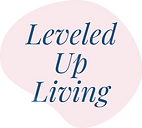From Burnout to Balance: How to Cultivate a Stress-Free Lifestyle
- Julia Bauer
- Jan 22
- 3 min read
Updated: Feb 5
The constant juggling of work, relationships, and personal responsibilities can leave us all feeling overwhelmed and burnt out. However, finding balance and creating a stress-free lifestyle is easily achievable with the right tools and mindset. Here’s how you can shift from burnout to balance by incorporating mindfulness, effective time management, and self-care into your daily routine.
Understanding Burnout
Burnout is more than just feeling tired—it’s a state of emotional, physical, and mental exhaustion caused by prolonged stress. Common signs include:
Constant fatigue, even after resting.
Detachment or feelings of cynicism towards work or responsibilities.
Difficulty concentrating or decreased productivity.
Frequent illnesses due to a weakened immune system.
Recognizing these signs is the first step toward regaining control and creating a lifestyle that supports your well-being.
The Role of Mindfulness
Mindfulness is the practice of being present in the moment without judgment. It helps reduce stress by shifting your focus from what’s overwhelming to what’s manageable. Here are some ways to integrate mindfulness into your day:
1. Mindful Breathing
A simple yet powerful tool to calm your mind and body:
Find a quiet space and sit comfortably.
Inhale deeply for a count of four, hold for four, and exhale for six.
Repeat for 5-10 minutes to reduce stress and increase focus.
2. Gratitude Journaling
At the end of each day, write down three things you’re grateful for. This shifts your focus from stressors to positive aspects of your life.
3. Body Scans
Before bed, mentally scan your body from head to toe, noticing areas of tension and consciously relaxing them. This promotes better sleep and reduces anxiety.
Mastering Time Management
Poor time management is a major contributor to stress. Creating structure in your day can help you accomplish tasks without feeling overwhelmed:
1. Prioritize Your Tasks
Use the Eisenhower Matrix to categorize tasks into four quadrants:
Urgent and Important: Do these first.
Important but Not Urgent: Schedule these for later.
Urgent but Not Important: Delegate these if possible.
Neither Urgent nor Important: Eliminate these from your schedule.
2. Time Blocking
Allocate specific times for different activities. For example:
Morning: Exercise and plan your day.
Afternoon: Focus on high-priority work.
Evening: Dedicate time to hobbies or relaxation.
3. Learn to Say No
Overcommitting can lead to burnout. Set boundaries by politely declining tasks that don’t align with your priorities.
Self-Care as a Non-Negotiable

Self-care is essential for maintaining balance and preventing burnout. Here’s how to make it a priority:
1. Physical Self-Care
Exercise regularly to release endorphins and boost your mood.
Stay hydrated and nourish your body with balanced meals.
Get 7-9 hours of quality sleep each night.
2. Emotional Self-Care
Connect with loved ones who uplift and support you.
Seek therapy or counseling if needed to process emotions and gain clarity.
Engage in hobbies that bring you joy.
3. Spiritual Self-Care
Meditate or pray to find inner peace.
Spend time in nature to feel grounded and connected.
Practice affirmations to reinforce positive beliefs about yourself.
Tools to Help You Stay Balanced
To ensure long-term success in cultivating a stress-free lifestyle, consider these additional tools:
1. Breathing Techniques
Box Breathing: Inhale for four counts, hold for four, exhale for four, and pause for four before repeating.
Alternate Nostril Breathing: Close your right nostril and inhale through your left nostril, then switch and exhale through the right. Repeat for 3-5 minutes.
2. Guided Meditation Apps
Apps like Calm, Headspace, or Insight Timer can help you build a consistent mindfulness practice.
3. Habit Trackers
Use a habit tracker to monitor your progress in integrating self-care, mindfulness, and time management practices.
Finding Your Balance
Remember, creating a stress-free lifestyle is a journey, not a destination. Be patient with yourself as you experiment with these tools and techniques. By prioritizing mindfulness, mastering time management, and committing to self-care, you’ll not only overcome burnout but also build a life filled with balance and joy.
What steps will you take today to shift from burnout to balance? Share your journey in the comments below!

Comments